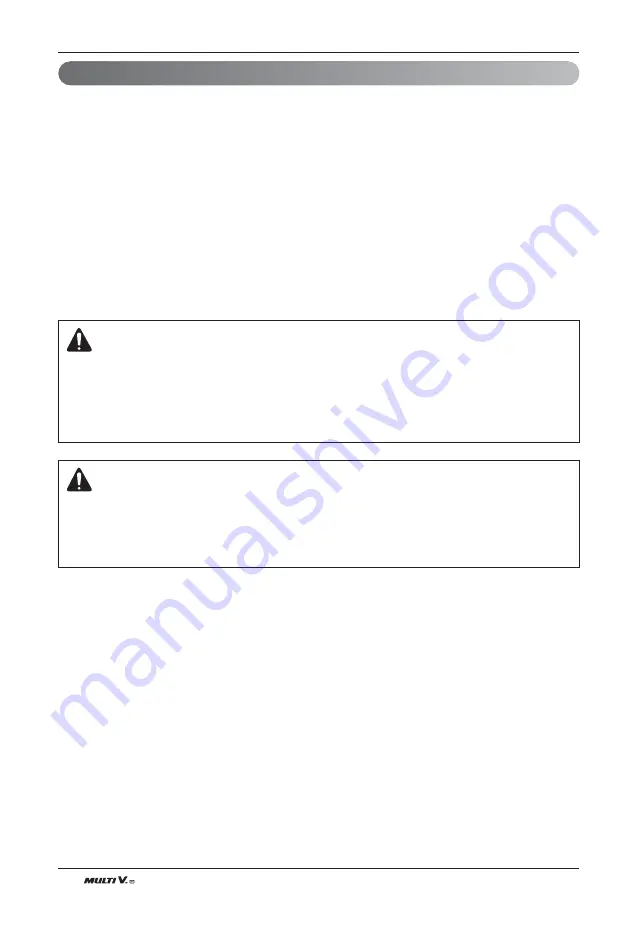
60
Outdoor Unit
Wiring of main power supply and equipment capacity
1. Use a separate power supply for the Outdoor Unit and Indoor Unit.
2. Bear in mind ambient conditions (ambient temperature,direct sunlight, rain water,etc.) when proceed-
ing with the wiring and connections.
3. The wire size is the minimum value for metal conduit wiring. The power cord size should be 1 rank
thicker taking into account the line voltage drops. Make sure the power-supply voltage does not drop
more than 10%.
4. Specific wiring requirements should adhere to the wiring regulations of the region.
5. Power supply cords of parts of appliances for outdoor use should not be lighter than polychloroprene
sheathed flexible cord.
6. Don't install an individual switch or electrical outlet to disconnect each of indoor unit separately from
the power supply.
WARNING
• Follow ordinance of your governmental organization for technical standard related to electrical equipment, wiring reg-
ulations and guidance of each electric power company.
• Make sure to use specified wires for connections so that no external force is imparted to terminal connections. If con-
nections are not fixed firmly, it may cause heating or fire.
• Make sure to use the appropriate type of overcurrent protection switch. Note that generated overcurrent may include
some amount of direct current.
CAUTION
•
Some installation site may require attachment of an earth leakage breaker. If no earth leakage breaker is installed, it may
cause an electric shock.
• Do not use anything other than breaker and fuse with correct capacity. Using fuse and wire or copper wire with too large ca-
pacity may cause a malfunction of unit or fire.
Electrical Wiring
Summary of Contents for Multi V ARUB Series
Page 133: ......
















































